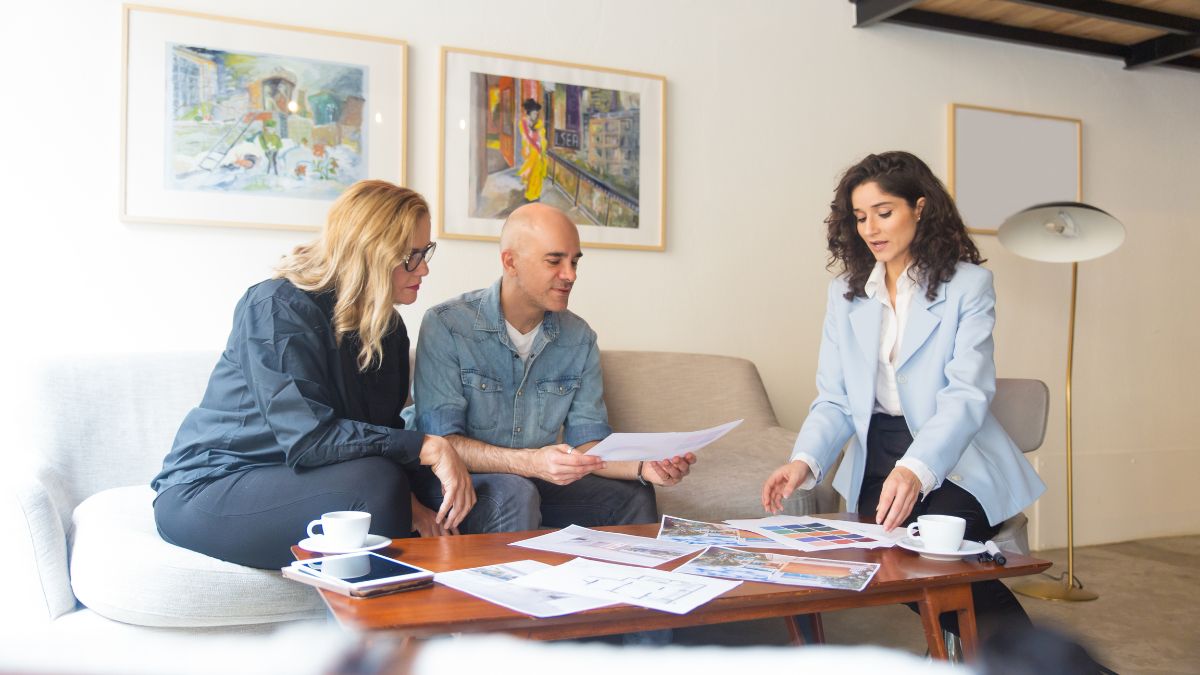LAW
The Role of ERISA in Protecting Employee Benefits

What Is ERISA?
The Employee Retirement Income Security Act (ERISA) is a landmark federal law enacted in 1974 designed to safeguard the retirement assets of American workers. This comprehensive legislation sets minimum standards for most voluntarily established pension and health plans within the private sector, providing crucial protections to plan participants. By establishing guidelines for managing, administering, and maintaining employee benefit plans, ERISA ensures that workers can securely plan for their retirement without fear of mismanagement or loss of benefits.
However, comprehending ERISA’s exact applications and implications can be complex. Such professionals can offer crucial guidance for employers and employees navigating the often-complicated landscape of employee benefit disputes and compliance challenges, ensuring that all parties are protected under the law.
Key Protections Under ERISA
ERISA delivers several key protections to employees, standing as the pillar of workforce benefits, security, and financial stability. Consequently, seeking advice from a knowledgeable San Jose ERISA lawyer can be invaluable.
- Access to Information: One of the fundamental protections under ERISA is the requirement for plans to provide participants with essential information about their benefits. This includes details on rules, financial data, and documents related to their rights under the plan. Access to this information empowers employees to make informed decisions about their retirement and health benefits.
- Fiduciary Responsibilities: ERISA imposes strict responsibilities on those who manage and control plan assets. These fiduciaries must act in participants’ best interests, adhering to high standards of conduct. This ensures that the management of benefit plans is conducted with the utmost integrity and care, minimizing the risk of mismanagement or abuse.
- Grievance and Appeals Process: Another vital protection is the requirement for plans to establish a fair grievance and appeals process. This allows participants to address any disputes or issues regarding their benefits effectively. A transparent and equitable process ensures employees can seek remedies without unnecessary hurdles.
- Right to Sue: ERISA importantly gives participants the ability to take legal action for benefits and violations of fiduciary duty. This legal recourse is a powerful tool for employees to enforce their rights under the law, providing an essential mechanism for accountability and compliance.
Common Issues Faced by Employees
Despite the robust protections afforded by ERISA, employees still encounter various challenges that can affect their access to and quality of benefits. Some of the most common issues include:
- Denial of Benefits: Employees may face wrongful denials of their entitled benefits. These denials can be due to administrative errors, misinterpretation of plan documents, or intentional wrongful acts by plan administrators. Such denials can cause significant delays in receiving vital support, affecting employees’ financial and health stability.
- Misclassification of Workers: Another prevalent issue is the misclassification of workers. This can occur when employees are wrongly classified as independent contractors or part-time workers, leading to their exclusion from benefit plans. Such misclassification can deprive workers of the security and protections granted under ERISA, exposing them to undue risk.
- Inadequate Disclosures: More information about benefit plans is another challenge that employees often face. Employees may make informed decisions regarding their benefits without proper disclosures, leading to adequate retirement planning and financial insecurity.
How To Ensure Your Rights Are Protected
Protecting one’s ERISA rights requires a proactive approach. Here are some strategies employees can employ to safeguard their entitlements:
Regularly reviewing benefit statements is a critical step. By consistently monitoring their statements, employees can promptly identify any discrepancies or issues that may arise. Staying informed about the details and terms of their benefit plans is equally important. Engaging with expert sources when uncertainties or questions arise can provide clarity and guidance, ensuring that employees fully understand their rights and obligations.
Moreover, attending educational sessions or workshops on employee benefits can be highly beneficial. Such events, often organized by various organizations and employers, offer valuable insights into the complexities of ERISA and equip employees with the knowledge needed to manage their plans effectively.
Case Studies
Real-world examples highlight the practical applications and importance of ERISA protections. One notable case involved a company attempting to reduce retiree health benefits. Employees challenged this action under ERISA, and ultimately, the courts upheld the protections afforded by the law, resulting in the reversal of the benefits reduction. This case underscores the pivotal role ERISA plays in safeguarding employee benefits.
Another significant case, documented in a recent news article, involved the U.S. Supreme Court’s adoption of a narrow reading of an ERISA fraud provision. The judiciary’s interpretation of this provision emphasizes the continuous evolution of ERISA’s applications and the crucial role that legal precedents play in enforcing these protections.
Steps To Take If You Believe Your Rights Have Been Violated
If you suspect your ERISA rights have been violated, taking swift and effective action is essential. Here are the steps to follow:
- Document Everything: Maintain detailed records of all communications, transactions, and documents related to your benefits. This documentation will be crucial if you pursue legal action or file a complaint.
- Seek Professional Advice: Consult with legal professionals experienced in ERISA matters. They can offer expert advice on your situation, helping you understand your rights and craft a strategic plan to address the violation.
- File a Formal Complaint: If necessary, consider filing a formal complaint with the appropriate regulatory body, such as the Department of Labor, or pursuing legal action. Taking this step can help enforce your rights and resolve the issue promptly.
Additional Resources
- Department of Labor – Benefit Information
- Nolo’s ERISA FAQ
Conclusion
ERISA is a critical safeguard for employees, ensuring their benefits are protected and managed with the highest standards. By remaining informed and proactive, employees can take the necessary steps to uphold their rights and fully benefit from ERISA’s protections. Leveraging available resources and seeking expert guidance can make navigating the complexities of employee benefits much more manageable, securing a more stable financial future.
LAW
Building a Strong Estate Plan: Essential Documents Everyone Needs

Creating an estate plan is one of the most important steps you can take to ensure your wishes are honored and your loved ones are protected. Whether you are planning for aging, incapacity, or the orderly transfer of wealth, having a clear set of documents is essential. Consulting with professionals who specialize in Mooresville Elder Law ensures that all legal nuances are addressed and your plans are thoroughly documented.
Life is unpredictable, but a thoughtful estate plan can minimize uncertainty, reduce family conflicts, and help your family avoid unnecessary expenses or legal hurdles. Even if you think you’re “too young” or “don’t have enough assets,” everyone benefits from a detailed strategy for their health care preferences, guardianship wishes, and distribution of savings or property after death.
Estate planning is not just for the wealthy; it’s for anyone who wishes to have a say in their care and asset management in the event of an unexpected occurrence. Without the proper documents, state laws and courts make those decisions for you, potentially contradicting your preferences and burdening your loved ones with avoidable complexity.
Last Will and Testament
Your will acts as the foundation of your estate plan. It allows you to declare how property, money, and personal possessions will be distributed after your death. More importantly, a will appoints an executor who will carry out your wishes and manage your final affairs. Parents of minor children can name a guardian to raise their children if they are no longer able to do so. Without a valid will, state laws will determine how your assets are divided, which can lead to outcomes you might not want for your heirs.
Durable Power of Attorney
A Durable Power of Attorney is an essential tool in comprehensive estate planning. It allows you to designate someone you trust to act on your behalf for legal and financial matters if you become incapacitated. This person can manage bill payments, property transactions, tax filings, and even business interests, helping to avoid costly, court-appointed guardianships. Incorporating a POA into your estate plan ensures that your affairs are handled smoothly, reducing stress and expense for your loved ones during an already challenging time.
Healthcare Power of Attorney and Living Will
Healthcare Power of Attorney
This document allows you to name an agent to make medical decisions on your behalf if you become unable to do so. Clear designation of a trusted decision-maker prevents uncertainty and maintains continuity of care, sparing family members the pain of disagreeing over treatment options during crises.
Living Will
A Living Will, also called an advance directive, communicates your preferences regarding life-sustaining measures and care at the end of life or in cases of severe incapacity. It’s critical for ensuring that your values and choices are respected by healthcare providers and loved ones alike. Together, these documents give your family clarity and authority during stressful times.
Revocable Living Trust
A revocable living trust enables you to transfer assets into a trust that manages them for your benefit during your lifetime and distributes them efficiently after your death. Unlike a will, it avoids probate, speeds up the transfer process, preserves your privacy, and can help with incapacity issues. These trusts are flexible, allowing changes to beneficiaries or terms, which is especially helpful for managing complex estates or multiple properties.
Beneficiary Designations
For accounts such as retirement plans, life insurance, and certain investment accounts, beneficiary designations determine the direct recipient of those funds upon your passing. These designations override instructions in your will, so it is essential to regularly review and update them, especially after significant life changes, such as marriage, divorce, or the birth of a child. Unupdated designations could inadvertently direct assets to unintended individuals, regardless of your current wishes.
Regular Review and Updates
Estate planning documents need regular updates to mirror life changes like marriage, divorce, new children, asset adjustments, or legal updates. The National Council on Aging recommends revisiting your estate plan every three to five years or following major life events. It’s advisable to include digital assets, personal instructions, or pet care directives. Maintaining current documents helps ensure your wishes are clear and eases the burden on your loved ones.
Conclusion
Taking a proactive approach to estate planning with the appropriate set of documents safeguards your wishes and eases decisions for your loved ones. By periodically reviewing and updating your plan with experienced professionals, you ensure control over your assets and healthcare, regardless of future events. The confidence gained from solid estate planning is priceless—not only for you but also for those you care about.
LAW
Andhra Law Times: Redefining Legal Journalism with Purpose, Integrity, and Impact

In an era where journalism is under intense scrutiny, legal media must do more than report cases or publish verdicts. The most respected platforms are those that combine sharp analysis, ethical rigor, and a commitment to social justice. Andhra Law Times is one such rising voice—an emerging leader in legal journalism that bridges traditional reportage with meaningful impact, shaping how law is understood, discussed, and applied in Andhra Pradesh and beyond.
This article delves into what makes Andhra Law Times distinct: its editorial philosophy, its alignment of performance with social responsibility, and why it represents the future of journalistic leadership in legal reporting.
Who Is Andhra Law Times?
Andhra Law Times is a legal news and commentary platform. Though relatively new on the landscape, it has steadily gained recognition for its nuanced reporting, expert commentary, and dedication to accessibility. It covers court judgements, legislative developments, public interest litigation, and rights issues—yet what sets it apart is how those stories are told: with clarity, context, and concern for the communities affected.
More than just breaking news, Andhra Law Times positions itself as a bridge: between judges and the public, between legal theory and lived experience, between governance and accountability. Its contributors include practicing lawyers, scholars, activists, and citizen journalists, all working together to ensure law is not just a formality, but a force for justice.
A Leadership Philosophy Rooted in Purpose
At the heart of Andhra Law Times lies an editorial philosophy built on purpose-driven journalism. Its core values include:
-
Empathy in Reporting
Stories are not just events—they’re about people. Andhra Law Times emphasises the human consequences of legal decisions, highlighting victims, underrepresented voices, and the socio-cultural contexts in which law operates. -
Integrity & Transparency
Legal journalism faces risks: misinterpretation, bias, sensationalism. Andhra Law Times insists on accurate sourcing, full context, and transparency about its editorial processes. Corrections are published openly; conflicts of interest are disclosed. -
Accessibility & Inclusion
Legal language is often arcane. To bridge the gap, Andhra Law Times translates complex judgments into clear writing, provides summaries, infographics, and local language versions. It works to ensure citizens—regardless of educational background—can understand their rights, obligations, and recourse. -
Social Justice Orientation
The platform does not shy away from covering issues that matter: rights of marginalized communities, environmental law, labor rights, gender justice. It aims to hold institutions accountable and to highlight systemic issues, not just isolated legal matters.
Bridging Performance with Impact
Leadership in legal media isn’t only about moral purpose; it’s also about excellence in execution. Andhra Law Times has managed to merge the two in a way that is compelling, sustainable, and socially important.
-
Quality Reporting: Articles are fact-checked diligently; legal specialists are consulted; and deeper features are produced—on constitutional law, administrative law, or public interest litigation—going beyond mere headlines.
-
Innovative Storytelling: Andhra Law Times uses multimedia—podcasts, video explainers, interviews, and infographics—to make dense legal topics more engaging. For example, a complex Supreme Court decision is broken down via animated explainer videos so people outside the legal profession can follow.
-
Community Engagement: Not just reporting on issues, Andhra Law Times partners with NGOs, legal aid societies, and law schools to host public forums, webinars, and workshops—helping citizens know where to find legal help, how to file complaints, how the law impacts daily life.
-
Sustainability & Ethics: Advertising is clearly marked; sponsored content is separated; the platform avoids sensationalizing sensitive legal issues for clicks. It also invests in its team: ensuring fair compensation for contributors, diversity of voices, and safe working conditions for reporting.
Influence in the Digital Age
Digital platforms are reshaping how people consume legal news. Andhra Law Times has embraced these changes wisely, seeing them as opportunities to amplify impact rather than mere traffic generators.
-
Social Media Advocacy & Education: Andhra Law Times maintains active presence on platforms like Twitter, Instagram, and LinkedIn, not just to share articles, but to spark conversation—debates on legal reform, rights, policy changes. Followers are encouraged to ask questions, share stories, and participate in democracy.
-
Thought Leadership: Editorials and op-eds are published that don’t just comment on legal issues but propose solutions: reforms to outdated laws, suggestions for improving access to justice, critiques of legal system inefficiencies. By doing so, Andhra Law Times positions itself as more than observer—it becomes a catalyst for change.
-
User-Generated Content & Local Voices: Recognizing that law plays out differently in small towns and villages, Andhra Law Times solicits articles and reports from local correspondents. Awareness of local customs, languages, and conditions helps it avoid a one-size-fits-all view.
Why Andhra Law Times Matters
In today’s socio-legal climate, legal information is power. Andhra Law Times matters because:
-
It builds legal awareness, enabling people to understand their rights, redress mechanisms, and how to participate in justice systems.
-
It enhances accountability, by shining light on judicial and governmental institutions, demanding transparency and reforms where needed.
-
It supports legal empowerment of marginalized groups who historically have lacked voice, resources, or representation.
-
It reinforces rule of law: in democracies, laws matter only if known, trusted, and fairly enforced. Andhra Law Times helps ensure laws don’t remain abstract but are applied in context, with fairness.
Challenges and Opportunities Ahead
Even as Andhra Law Times gains traction, its path is far from free of obstacles. Recognizing and navigating them will define its long-term success.
-
Balancing Speed with Accuracy: In breaking headlines, there is pressure to publish quickly. But legal reporting demands precision. Errors can mislead, harm reputations, or misinform the public.
-
Monetization without Compromise: Generating revenue—through subscriptions, advertising, sponsored content—can risk diluting editorial independence. Andhra Law Times must find models that support integrity.
-
Access in Rural & Underrepresented Areas: Internet access, literacy, language barriers are still obstacles. To have true impact, coverage must reach those who are least heard.
-
Maintaining Diversity of Voices: As platforms grow, institutional pressure, groupthink, or selection bias can creep in. Ensuring diverse contributors—not just legal professionals, but activists, grassroots leaders, local correspondents—is vital.
But each challenge is also an opening:
-
Investment in fact-checking tools, legal translation, local languages.
-
Subscription tiers, membership models, grants, partnerships with foundations.
-
Offline outreach: workshops, print summaries, radio, or community gatherings.
-
Mentorship programs for new writers, especially from underrepresented backgrounds.
Looking Ahead: The Vision for Andhra Law Times
The trajectory of Andhra Law Times signals a shift in what leadership in legal journalism can look like. As it continues to evolve, it may achieve several new milestones:
-
Expanding its regional reach, possibly beyond Andhra Pradesh, into national or pan-South Indian legal coverage, while retaining its local flavor.
-
Establishing a legal education wing: training programs for law students, paralegals, or community legal educators.
-
Building a repository of legal resources: free guides, searchable databases of judgments, easy-to-use toolkits for citizens.
-
Collaborations with tech platforms: legal tech startups, AI summarization of judgments, mobile apps for citizens to lodge grievances or track cases.
-
Advocating for policy reforms: using its platform to influence legislation, access to justice reforms, or judicial procedural improvements.
A Model for Leadership in Journalistic Purpose
Andhra Law Times is more than a news platform—it’s a model of what leadership in legal journalism can become. It embodies the idea that success is not just about reach or clicks—but about trust, impact, and responsibility. In a time when law shapes everyday life—during pandemics, environmental crises, social movements—the need for legal journalism that is reliable, empathetic, and justice-oriented is greater than ever.
By combining performance with purpose, Andhra Law Times demonstrates that journalism, especially around something as crucial as law, need not choose between integrity and influence. Its journey shows that ethical leadership in media is not just inspirational—it’s essential.
LAW
Child Custody Challenges: Understanding Your Rights and Options

Navigating child custody can feel overwhelming, especially during an emotional time. Understanding your rights and options is the first step to making confident, informed decisions.
Whether facing a divorce, separation, or a change in family circumstances, knowing what to expect helps reduce stress and protect your child’s best interests. Custody challenges vary, but you don’t have to face them alone.
With the right knowledge and support, you can work toward a solution that ensures stability and care for your child. Let’s break down the key points so you can move forward with clarity.
The Impact of Domestic Violence
Domestic violence can have a serious effect on child custody decisions. Courts always prioritize the child’s safety and well-being, so any history of abuse is taken very seriously.
A parent accused of violence may face limited or supervised visitation, or in some cases, lose custody altogether. Even if the child wasn’t directly harmed, witnessing violence can impact their emotional health.
That’s why it’s important to bring all facts forward. If you or your child is in danger, seeking legal and protective help right away is key to keeping everyone safe and ensuring a fair custody arrangement.
Geographic Relocation and Custody Changes
If one parent wants to relocate, they often need permission from the other parent or the court. The court will consider how the move affects the child’s schooling, family relationships, and overall stability.
Even if the move is for a job or a better life, it must still support the child’s best interests. If parents can’t agree, a judge will decide based on the facts.
Planning and communicating openly can help avoid unnecessary conflict and stress for everyone involved.
Substance Abuse Issues
Courts are careful to protect children from unsafe or unstable environments. If there’s evidence of drug or alcohol misuse, the court may limit custody or require supervised visits.
But it’s not always permanent. A parent who seeks help and shows improvement may regain custody rights over time. The focus is always on what’s best for the child.
Support from counselors, treatment programs, and legal professionals can make a big difference in moving forward in a healthy, safe direction.
The Role of Mediation in Custody Disputes
Mediation offers a peaceful way to handle custody disagreements without going to court. A trained mediator helps parents talk through their concerns and find workable solutions together.
This process is often quicker, less expensive, and less stressful than a court battle. Mediation focuses on cooperation and puts the child’s needs first.
With guidance from trusted professionals like this Springdale car accident lawyer, parents can find fair agreements that work for both sides.
Choosing mediation can help families move forward with less conflict and more understanding, which is important when children are involved.
Protecting Your Child’s Best Interests
Protecting your child’s best interests is the heart of every custody decision. By staying informed and seeking the right support, you can make choices that lead to a brighter, more stable future.
Don’t face custody challenges alone. Reach out to trusted legal professionals who can guide you every step of the way. Your child deserves security, care, and a plan that puts them first.
Did you find this article helpful? Check out the rest of our blog now!
-

 HEALTH2 years ago
HEALTH2 years agoIntegrating Semaglutide into Your Weight Loss Plan: A Practical Guide
-

 HOME IMPROVEMENT2 years ago
HOME IMPROVEMENT2 years agoHow to Choose the Perfect Neutral Area Rug for Every Room
-

 LAW1 year ago
LAW1 year agoTeenage Drivers and Car Accidents in California: Risks and Parental Liability
-

 CONSTRUCTION1 year ago
CONSTRUCTION1 year agoConstruction Site Safety Regulations in New York and Your Rights as a Worker
-

 LAW1 year ago
LAW1 year agoPost-Divorce Considerations in California: Modifications and Long-Term Planning
-

 HOME2 years ago
HOME2 years agoSandra Orlow: The Teen Model Who Captivated the Internet
-

 FINANCE1 year ago
FINANCE1 year agoDigital Asset Management in Florida Estate Planning
-

 FASHION2 years ago
FASHION2 years ago7 Celebrity-Inspired Elegant Summer Dresses For 2024
